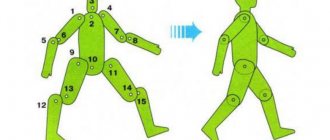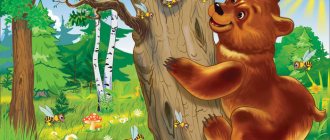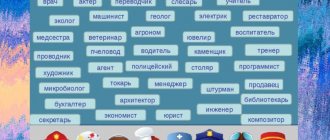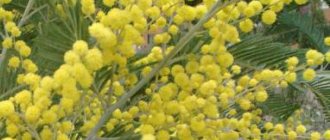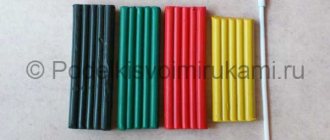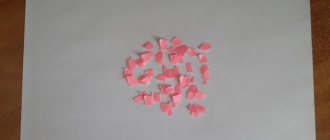Sample notes for modeling classes in the second junior group
Detsky sad.Ru >> Electronic library >> Family and children >> Children's creativity >> Source: N. B. Khalezova, N. A. Kurochkina, G. V. Pantyukhina.
“Modeling in kindergarten” Moscow, “Enlightenment”, 1978 OCR Detskiysad.Ru Modeling dryers
Program content. Teach children to sculpt dryers: divide the clay into small parts, roll out the pieces with straight hand movements, connect the ends of the clay cylinder, placing them on top of each other and pressing; develop independence in completing tasks. Equipment. A bunch of real dryers, clay, boards for modeling, several ropes on which the molded dryers will be strung. Methodology of conducting the lesson. In the morning, Parsley comes to the group and brings gifts for the children - a bunch of dried bread. The teacher invites the children to consider how small, round, and toasty they are. There are many of them - a whole bunch. The children are given dry bread, they look at it and taste it. The teacher informs the children that today in class they will be making dryers. At the beginning of the lesson, the teacher again shows the children a bunch of dryers, asks them to look again at which dryers are round, and that each has a hole in the middle so that they can hang the dryer on a string. Children trace the shape of the dryer in the air with their finger and say: “Round, round.” Then the teacher shows how to sculpt the dryer and performs the actions at a slow pace, accompanying them with explanations: he plucks off a little clay with his right hand, puts a piece on his left hand and rolls it out. When a long strip is obtained - a cylinder, he connects its ends with both hands and presses. After repeating the explanation, he invites the children to start working. During the lesson, the teacher helps each child if necessary. At the end of the lesson, he collects the molded dryers, strings them together on a string and says: “That’s how many round, small dryers we made today! How beautiful they are! Everyone tried! Let’s give dryers to our dolls.”
Modeling a bunny
Program content. Teach children to portray a toy bunny: divide the clay into three parts, roll two balls (large for the body, small for the head), roll out a long cylinder and bend it (these are the ears); learn to connect parts by pressing them. Foster activity and independence. Equipment. Toy (roly-poly bunny), clay, boards, shelves. Methodology of conducting the lesson. The teacher examines the bunny with the children, draws attention to the fact that it is a funny and cheerful toy (he touches it, it swings and rings). Children look at its parts: the body is a ball, the head is also a ball, only smaller, the ears are long, like columns. “Who knows,” asks the teacher, “where we will start sculpting a bunny? That's right, from the body. How to roll a big ball for the body?”, he offers to show everyone. Children imitate the rolling motion. “You also need to roll a small ball for the head,” adds the teacher. - You already know how to do this. And I’ll show you how to mold the ears.” The teacher takes the smallest part of the clay, puts it on his left hand and rolls it out with his right hand, bends the resulting cylinder, then shows how to attach the ears to the head. During the lesson, the teacher helps those who are experiencing difficulties. At the end of the lesson, he approves of the children’s work, notes their independence, shows them the most interesting toys, then offers to put all the hares on the shelf: “This is a store, there are toys in it.”
Gingerbread making
Program content. Continue to teach children to modify the shape of the ball - flatten the ball with their palms to obtain a gingerbread disk; learn to decorate a uniform using a signet and a straw; to foster creativity and independence in children. Equipment. Real gingerbread cookies, clay, boards, stamps and tubes for applying patterns, a large tray where children can put gingerbread cookies. Methodology of conducting the lesson. The teacher shows the children a gingerbread and asks how they can make a gingerbread from clay. If anyone answers, you can ask him to show it to all the children. If children are in difficulty, then the teacher shows and explains. He separates some of the clay and rolls it into a ball, then places it on his palm, and slightly flattens it with the other so that the gingerbread is not thin. Invites the children to make a lot of gingerbread cookies. Before the end of the lesson, those who completed the task can be given signets and asked to decorate the gingerbread cookies. Then the teacher asks the children to put all the gingerbread cookies on a beautiful tray so that in the evening they can show their mothers how beautiful the gingerbread cookies turned out.
Summary of a lesson with children of the second junior group on modeling “Vitamins for animals”
Modeling lesson for children of the second junior group “Vitamins for animals”
Description:
This material will be useful and interesting to teachers of younger groups and parents.
The lesson requires preliminary preparation. Goals:
- developing children's interest in modeling;
— familiarization with the properties of plasticine; - introduction to a new toy; — consolidating children’s knowledge about vitamins and their benefits. Objectives:
- continue to develop skills in working with plasticine;
- continue to develop knowledge about primary colors; - promote the development of aesthetic perception; - develop the ability to listen carefully to the teacher; - develop gross and fine motor skills; - strengthen children’s ability to tear small pieces from a large lump, roll balls and flatten them; - cultivate accuracy in work; — cultivate sympathy for someone else’s misfortune and a desire to help. Preliminary work:
reading K. Chukovsky “Doctor Aibolit”, a printed board game “Vegetables and Fruits”, looking at illustrations for the work of K. Chukovsky “Doctor Aibolit”, talking with children about a healthy lifestyle.
Equipment:
plasticine, board, napkins, paper blanks for a doctor’s suitcase, soft toy fox, printed board game “Vegetables and Fruits.
Assemble the puzzle”, a treat for children - apples. Progress of the lesson:
Children sit on chairs.
A knock is heard on the door. The teacher opens the door, and there is a fox. Chanterelle:
Guys, Doctor Aibolit sent me to you!
We're in trouble! Aibolit has run out of vitamins. Children:
What are vitamins for?
Educator:
Vitamins help children and adults to be strong and healthy.
Some vitamins are needed for growth, others - for the eyes - to see well, others - for the head - to think well, to be smart. And there are vitamins that protect us from diseases. If a child does not receive enough of these vitamins, he begins to get sick often. What do you think, at what time of year do we get the most vitamins? Children:
In summer and autumn, because there are a lot of fruits and vegetables at this time.
Chanterelle:
Well done guys!
You know a lot. And I know the game. Do you want to play? Children:
Yes.
The fox and the guys are playing the game “Put the puzzle together.” They collect various vegetables and fruits, and the teacher helps. Educator:
Guys, do you know that at other times of the year, so that people do not lack vitamins, vitamin tablets are sold in pharmacies.
And Doctor Aibolit ran out of such vitamins. Well guys, let's help Aibolit? Children:
Of course, we will help!
Educator:
Let's make some vitamins and put them in these suitcases.
And the fox will give it to Aibolit. The suitcase has compartments for vitamins, they are of different colors. What color vitamins will we make? Children name the colors drawn on the blank. The teacher shows the procedure. Children look carefully and show movements in the air. Educator:
We pinch off a small one from a large lump of plasticine, roll it into a ball in a circular motion and flatten it.
It turned out to be a vitamin. This is how I do the rest of my vitamins. (pronunciation and execution) Children look at the prepared material in front of them and begin to work at the prompting of the teacher. The teacher helps the children. In the middle of the lesson, the teacher conducts gymnastics for the eyes: We close our eyes tightly, count together to five, open them, blink and continue to work. Educator:
Our eyes rested a little.
Let's finish the job. Children finish modeling. The teacher and the fox conduct physical exercise. Our hands can clap - clap, clap. Our hands can slap - slap, slap. You can raise your arms up, you can shake them, knock with your fists, wave your wings, you can put your hands on your belt and make them dance with lanterns. You can shake hands with everyone and gather a big circle. Educator:
Well, guys, let's play.
Let's look at our vitamin cases. (look at the suitcases and discuss the work done) Educator:
we will show our suitcases with vitamins to our parents, and then send them by mail to Doctor Aibolit.
We exhibit our works at the stand. Chanterelle:
Guys, I really liked your place, can I stay?
Children:
Yes! The fox treats everyone with apples.


